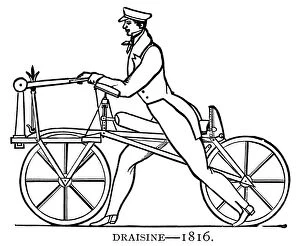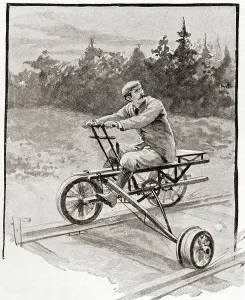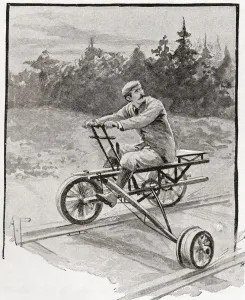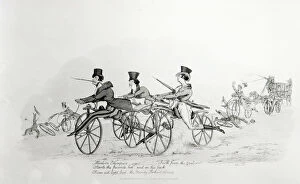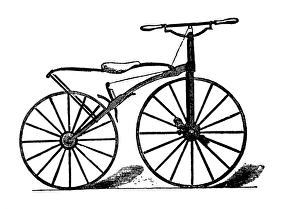Draisine Collection
"Draisine: The Revolutionary Ancestor of the Bicycle" Step back in time to 1816 when Karl von Drais de Sauerbrun unveiled his groundbreaking invention - the draisine
All Professionally Made to Order for Quick Shipping
"Draisine: The Revolutionary Ancestor of the Bicycle" Step back in time to 1816 when Karl von Drais de Sauerbrun unveiled his groundbreaking invention - the draisine, also known as the pedestrian curricle. This early form of transportation marked a significant milestone in the evolution of bicycles. Imagine a three-wheeled velocipede gracefully gliding along a railroad track, as depicted in an enchanting drawing from The Strand Magazine published in 1896. This captivating image transports us to an era where innovation and adventure intertwined. The draisienne, showcased in a vivid color engraving from 1820, served as the direct precursor to today's beloved bicycle. With its wooden frame and absence of gears, this marvel was reserved for only the wealthiest individuals who relished its luxurious padded seats and ornamental detailing. Intriguingly named "laufmaschine" or running machine, this two-wheeler gained popularity rapidly. A thrilling engraving captures a lively velocipede race at Jardin du Luxembourg in 1818 - showcasing how these contraptions captivated people's imaginations even then. Not limited to Europe alone, America had its own version of steam-powered velocipedes by Sauerbronn-Davis. A wood engraving published in 1888 showcases this unique creation that pushed boundaries further still. As we delve deeper into history through vibrant lithographs like Johnsons Pedestrian Hobbyhorse Riding School from 1819 or The Ladies Accelerator from the same year, it becomes evident that both men and women embraced this new mode of transport with equal enthusiasm. Even during ancient times resembling modern Olympics events captured in engravings circa 1820 featured athletes competing on their trusty draisines – proving that sportsmanship has always been synonymous with human progress. Today we owe our gratitude to Karl von Drais de Sauerbrun for his visionary invention that kick-started a revolution in transportation.

